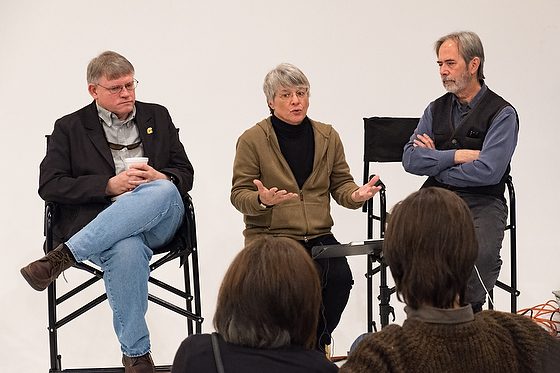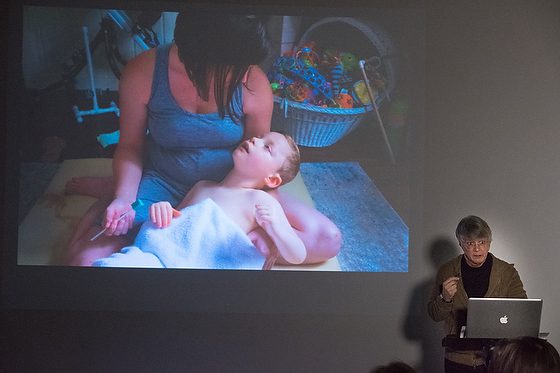Robin Rayne Nelson was the keynote speaker for the FOCUS Atlanta event held at Professional Photographic Resources on March 10, 2018. [Fuji X-E3, 18-55mm, ISO 12800, ƒ/4, 1/90]
A young college student asked Robin Rayne Nelson after her presentation to the FOCUS meeting on Pixels and Picas, “How do you deal with your emotions when covering a story you shared?”
Robin said, “We’re taught that journalists are to be objective in their work. That should be our goal. But we are human, not robots.”
Click on the photo here to see the story that Robin shared as used by the Marietta Daily Journal.
I realized hearing this question that the young college student didn’t understand being a human being means you should feel all the emotions that the story takes you. You don’t bury these emotions; you embrace them. You explore them. It is through embracing you are tapping into the subject’s world. It lets you get closer to understanding their struggles.

When you are honest with your emotions, you can be unbiased. You can understand what you feel is accurate and then back up and look at things from a different perspective, which the subject often cannot do.
Robin said, “Some might call what I do advocacy journalism, and I’m okay with that, but I am first and always a journalist.”
While doing stories on disability for the Institute on Human Development and Disability at the University of Georgia, Robin says, “Most important; my ‘why’ is to help reshape how society views and treats those with developmental challenges.” Robin tries to persuade the audience to consider the realities of people dealing with disabilities.

In persuasion, your message must focus on emotions while maintaining a balance between logic and feelings. Logic and emotion are the two elements that make for perfect influence. We can be persuasive using only logic or emotion, but the effect will be short-term and unbalanced.
If you want to move your audience emotionally, you must first experience it as the communicator. People will not cry if you don’t cry. The audience will not laugh if you don’t laugh.
The subject’s story must move you enough to pour all you have into the storytelling process so that the subject’s story will move the audience’s heart and minds into action.
You can hear Robin’s presentation here in my video of her talk.
My message for students learning this craft of journalism and storytelling is not to fear stories impacting you emotionally; my concern is that you are not being more emotionally moved.
As you peel the onion of a person’s story to get to the core of the story, you should be experiencing a more profound emotion than when you started. It may be tears of laughter or sorrow. Each story is different, just as each person is different.


